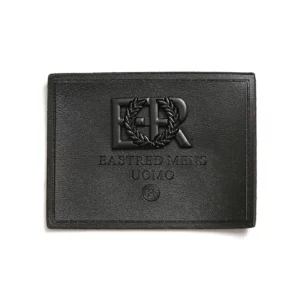Blank leather patches are commonly used in various industries for branding purposes, especially in the apparel sector. The choice of materials for manufacturing blank leather patches depends on factors such as the desired appearance, durability, and the intended use.
Here are some materials commonly used for manufacturing blank leather patches:
- Genuine Leather:
- Genuine leather is a common and traditional material used for blank leather patches. It is derived from animal hides, and its natural texture and appearance add a classic and rustic touch to garments. Genuine leather patches are durable and often associated with high-quality products.
- PU Leather (Polyurethane Leather):
- PU leather, also known as synthetic or faux leather, is a man-made material that mimics the appearance and feel of genuine leather. It is a cost-effective alternative and offers versatility in terms of colors and textures. PU leather is often chosen for ethical or sustainability reasons.
- PVC (Polyvinyl Chloride):
- PVC is a synthetic material that can be used to create leather-like patches. PVC patches are durable, water-resistant, and can be molded into various shapes and designs. They are suitable for applications where a more rigid and structured material is desired.
- Recycled Leather:
- Recycled leather is an eco-friendly option made from reclaimed leather scraps or fibers. This material reduces waste and environmental impact. Recycled leather patches can have a similar appearance and feel to genuine leather, depending on the manufacturing process.
- Bonded Leather:
- Bonded leather is created by bonding together leather fibers with an adhesive. blank leather patch While it may contain genuine leather, bonded leather is generally less expensive than full-grain leather. It provides a leather-like appearance but may not have the same level of durability as genuine leather.
- Suede:
- Suede is a type of leather with a soft, napped surface. It is often used for its luxurious feel and appearance. Suede leather patches can add a tactile and elegant element to garments. However, suede may require more careful handling to prevent staining.
- Nubuck Leather:
- Nubuck leather is similar to suede but is created from the outer side of the hide, giving it a finer grain. Nubuck leather patches have a velvety texture and a slightly more polished appearance than suede.
- Vegan Leather:
- Vegan leather is a catch-all term for cruelty-free, plant-based, or synthetic materials used as alternatives to traditional leather. Various materials, such as polyurethane (PU) or polyethylene (PE), can be used to create vegan leather patches.
- Canvas with Leather Appliqué:
- In some cases, manufacturers use canvas as a base material and apply leather patches as appliqués. This combination allows for creative designs and a mix of textures.
- Microfiber Leather:
- Microfiber leather is a synthetic material made from ultra-fine fibers. It can closely mimic the look and feel of genuine leather while offering advantages such as water resistance and ease of care.
The choice of material depends on factors like the desired aesthetics, budget, sustainability goals, and the specific application of the blank leather patch. Manufacturers often offer a range of options to meet different preferences and requirements.
